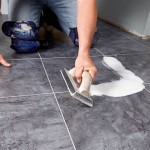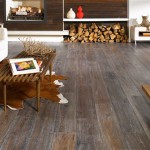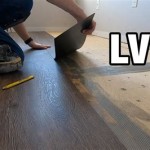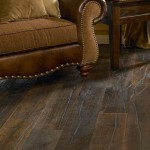Discover The Beauty Of Wide Plank Walnut Flooring Cost
Wide plank walnut flooring represents a significant investment in a home’s aesthetic and value. The allure of walnut, with its rich, dark hues and distinctive grain patterns, combined with the expansive presentation of wide planks, creates a luxurious and inviting atmosphere. Understanding the cost implications associated with this flooring option is crucial for informed decision-making, enabling homeowners to balance their design aspirations with budgetary realities.
The cost of wide plank walnut flooring encompasses several factors, including the quality of the wood, the plank dimensions, the finish applied, and the installation process. Walnut itself is a premium hardwood, typically more expensive than other popular choices like oak or maple. The “wide plank” designation further influences the price, as wider planks necessitate larger, often more mature trees, increasing material costs. Understanding each contributing element allows for a more accurate assessment of the overall project expense.
Factors Influencing the Cost of Wide Plank Walnut Flooring
Several distinct factors directly impact the ultimate cost of wide plank walnut flooring. These include the grade of the walnut lumber, the width and thickness of the planks, whether the flooring is solid or engineered, the type of finish applied, and the professional installation fees. Each of these elements contributes significantly to the final price tag.
The grade of walnut lumber is a primary determinant of cost. Walnut is graded based on the amount of heartwood (the darker, more desirable part of the tree) and sapwood (the lighter part). Higher grades, such as FAS (Firsts and Seconds) and Select, offer a more consistent color and fewer imperfections, commanding a premium price. Common grades, with more sapwood and knots, are typically less expensive. The homeowner must consider their aesthetic preferences and budget constraints when selecting the appropriate grade.
The dimensions of the planks, specifically the width and thickness, also play a critical role in pricing. Wider planks generally require larger, older trees, making them scarcer and more expensive. Thickness affects both the durability and the cost. Thicker planks can withstand more wear and tear and can be sanded and refinished multiple times, extending their lifespan. However, increased thickness also translates to increased material costs. The choice between thinner and thicker planks depends on the intended use, the subfloor condition, and the long-term maintenance plan.
The decision between solid and engineered walnut flooring significantly impacts the price point. Solid walnut planks are made from a single piece of wood, offering a traditional and durable option. However, solid hardwood is susceptible to expansion and contraction with changes in humidity, making it less suitable for areas with fluctuating moisture levels. Engineered walnut flooring consists of a thin layer of walnut veneer adhered to a core of plywood or other composite material. This construction provides greater stability and resistance to moisture, making it suitable for installation in basements or over concrete slabs. Engineered flooring is often, but not always, less expensive than solid hardwood due to the reduced use of solid walnut.
The type of finish applied to the walnut flooring also affects the overall cost. Pre-finished flooring, which is finished in the factory, offers convenience and often includes durable, multi-layer finishes. Site-finished flooring, finished on-site after installation, allows for greater customization of color and sheen. The cost of the finish itself varies depending on the type of sealant, stain, and topcoat used. Durable, low-VOC (volatile organic compound) finishes are often more expensive but contribute to a healthier indoor environment. The homeowner should consider the durability, aesthetic appeal, and environmental impact of the finish when making this decision.
Professional installation is a significant expense associated with wide plank walnut flooring. The complexity of the installation process, the size of the area to be covered, and the installer's experience all influence the labor costs. Proper installation is crucial for ensuring the longevity and performance of the flooring. An experienced installer will prepare the subfloor correctly, ensuring a level and stable surface. They will also install the planks with the appropriate spacing to allow for expansion and contraction. In some cases, the homeowner may choose to install the flooring themselves to save on labor costs. However, incorrect installation can lead to problems such as warping, cupping, and gapping, potentially negating any initial savings. Thorough research and careful consideration are vital when deciding whether to hire a professional installer or to undertake the project as a DIY endeavor.
Calculating the True Cost: Beyond the Initial Price Tag
The initial price per square foot of wide plank walnut flooring represents only a portion of the total cost. A comprehensive assessment requires factoring in additional expenses such as subfloor preparation, underlayment, transitions, baseboards, and ongoing maintenance. Failing to account for these ancillary costs can lead to significant budget overruns and unexpected expenses.
Subfloor preparation is a critical but often overlooked aspect of flooring installation. The subfloor must be level, clean, and dry to ensure proper adhesion and prevent future problems. Depending on the condition of the existing subfloor, preparation may involve patching cracks, leveling uneven surfaces, or even replacing damaged sections. These preparatory steps add to the overall project cost but are essential for a successful and long-lasting flooring installation. Ignoring subfloor imperfections can lead to uneven flooring, squeaks, and premature wear.
Underlayment provides a cushioning layer between the subfloor and the hardwood flooring, offering benefits such as sound insulation, moisture resistance, and added comfort underfoot. The type of underlayment required depends on the subfloor material and the type of flooring being installed. Some underlayments also provide a vapor barrier, which is particularly important when installing hardwood flooring over concrete slabs. While underlayment adds to the cost, it contributes to the overall performance and longevity of the flooring.
Transitions are necessary to seamlessly connect the new wide plank walnut flooring to other flooring types or to changes in elevation. Transitions can include thresholds, reducers, and t-moldings. The cost of transitions varies depending on the material and the complexity of the design. Matching the transitions to the walnut flooring enhances the visual appeal of the installation. Careful planning and selection of appropriate transitions are crucial for a professional and aesthetically pleasing finish.
Baseboards serve both a functional and decorative purpose, covering the gap between the flooring and the wall and adding a finished look to the room. The cost of baseboards depends on the material (wood, MDF, etc.), the profile, and the linear footage required. Installing new baseboards or replacing existing ones adds to the overall project cost. Coordinating the baseboard style and finish with the walnut flooring enhances the room's overall design aesthetic.
Ongoing maintenance is an essential consideration when budgeting for wide plank walnut flooring. Hardwood flooring requires regular cleaning and periodic refinishing to maintain its appearance and extend its lifespan. Cleaning products specifically designed for hardwood floors are necessary to avoid damaging the finish. Refinishing involves sanding down the existing finish and applying a new coat, which can be a significant expense. Proper maintenance, including regular cleaning and preventative measures such as using rugs in high-traffic areas, can minimize the need for frequent refinishing and extend the life of the flooring.
Strategies for Managing Wide Plank Walnut Flooring Costs
While wide plank walnut flooring represents a significant investment, several strategies can help homeowners manage costs without compromising on quality or aesthetic appeal. These include exploring alternative walnut grades, considering engineered flooring, opting for site-finished options, and phasing the project over time.
Exploring alternative walnut grades allows for cost savings without sacrificing the unique character of the wood. While higher grades such as FAS and Select command a premium price due to their consistent color and minimal imperfections, lower grades often offer a more rustic appearance with knots and color variations. These imperfections can add character and warmth to the flooring. Accepting a wider range of natural variations can significantly reduce the material cost without compromising the overall aesthetic appeal. The homeowner should carefully consider their design preferences and be willing to embrace the natural characteristics of the wood to realize cost savings.
Considering engineered walnut flooring is a viable option for reducing material costs while maintaining the appearance of solid hardwood. Engineered flooring consists of thin layer of walnut veneer adhered to a core of plywood or other composite material. This construction offers greater stability and resistance to moisture, making it suitable for installation in areas where solid hardwood is not recommended. Engineered flooring is often less expensive than solid hardwood due to the reduced use of solid walnut. The homeowner should carefully compare the veneer thickness and core material of different engineered flooring options to ensure durability and longevity.
Opting for site-finished flooring allows for greater control over the final appearance and can potentially reduce costs compared to pre-finished options. Site-finished flooring is installed unfinished and then sanded, stained, and sealed on-site. This allows for customization of the color and sheen of the finish. While site-finishing requires more labor and time, it can be less expensive than purchasing pre-finished flooring with a specific custom finish. The homeowner should carefully research different finish options and consider the environmental impact of the chosen products.
Phasing the flooring project over time allows for spreading the cost over a longer period, making it more manageable for the homeowner's budget. Instead of installing wide plank walnut flooring throughout the entire house at once, the project can be broken down into smaller phases, focusing on high-priority areas first, such as the living room or dining room. This approach allows for accumulating funds for each phase of the project and avoids the financial strain of a large upfront investment. Careful planning and prioritization are essential for successfully phasing the flooring project.

Unstained Unerated Site Finished Wide Plank Walnut Carlisle Floors

Make A Statement With Rich Walnut Floors Carlisle Wide Plank

Comparing Walnut Vs Oak Flooring Carlisle Wide Plank Floors

Black Walnut Hardwood Flooring Vermont Wide Plank

Walnut Oak Plank Alva Lvt Flooring Floorbay

American Walnut Engineered Hardwood Flooring Builddirect

Boston Features Carlisle Pre Finished Walnut Floors Wide Plank

Black Walnut Hardwood Flooring Vermont Wide Plank

Make A Statement With Rich Walnut Floors Carlisle Wide Plank

Black Walnut Hardwood Flooring Vermont Wide Plank
See Also







